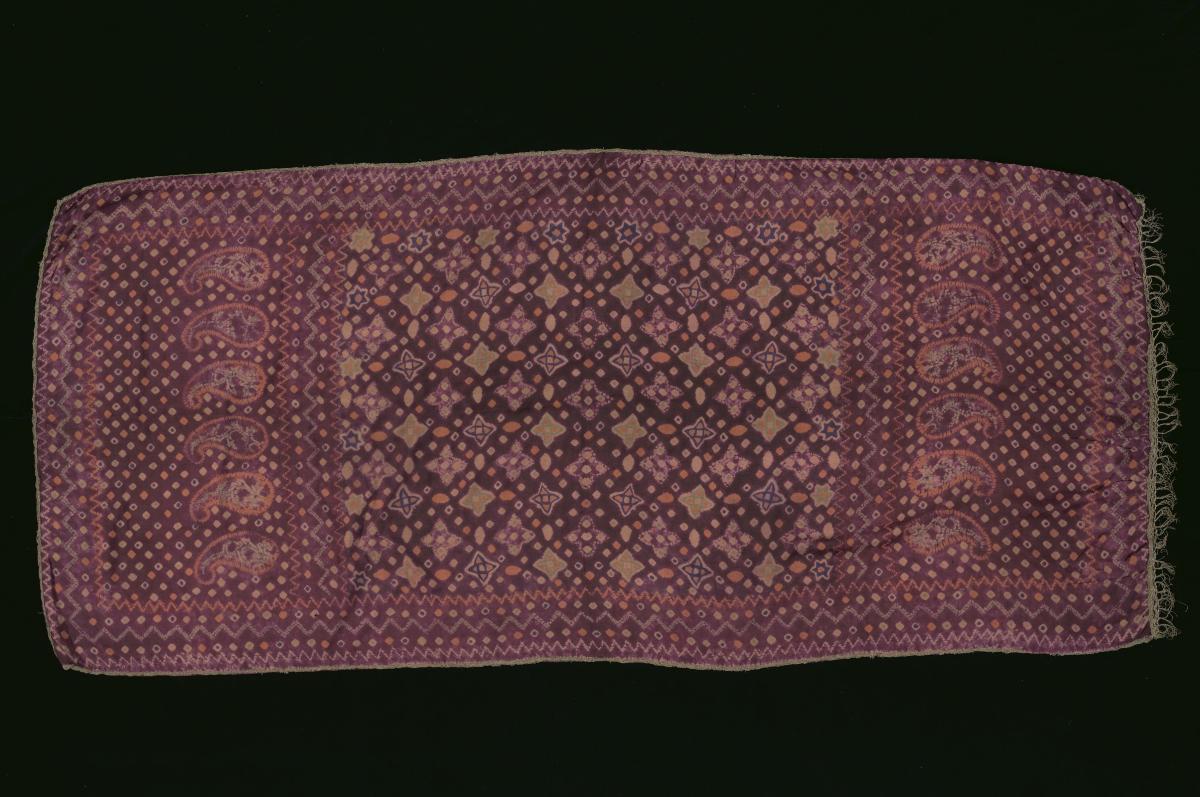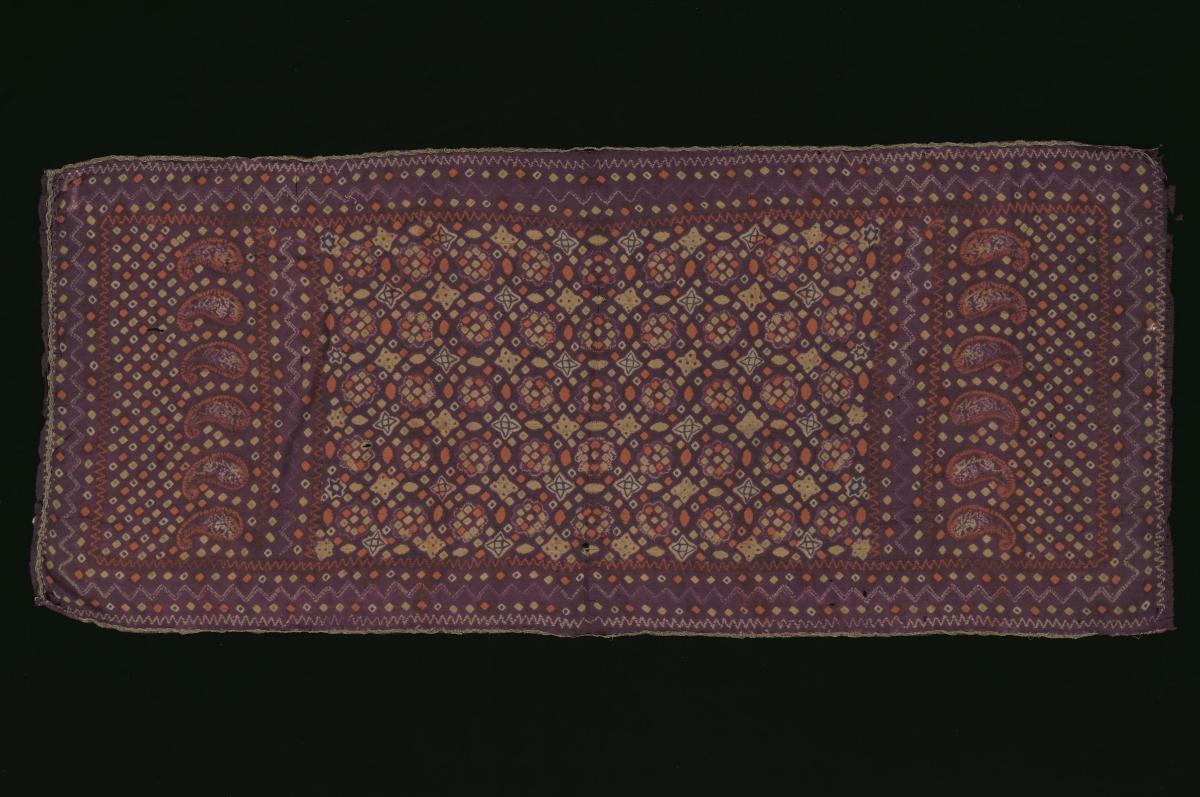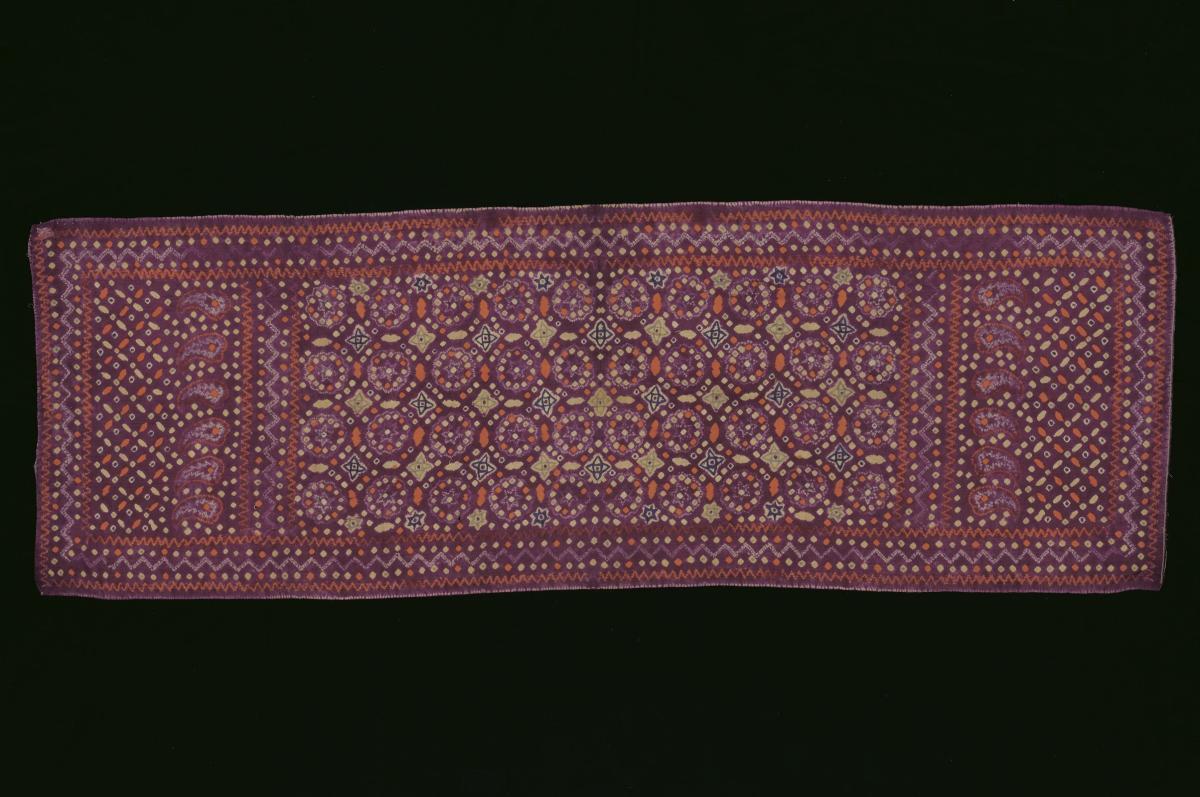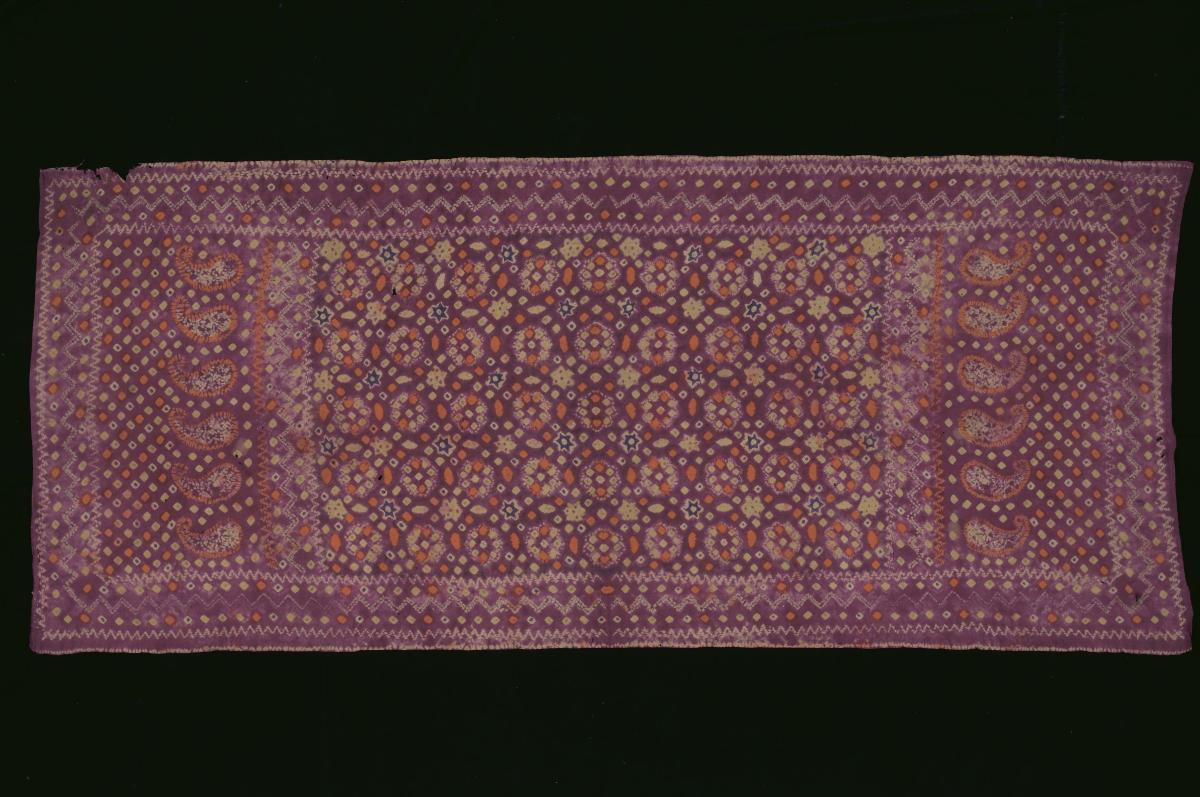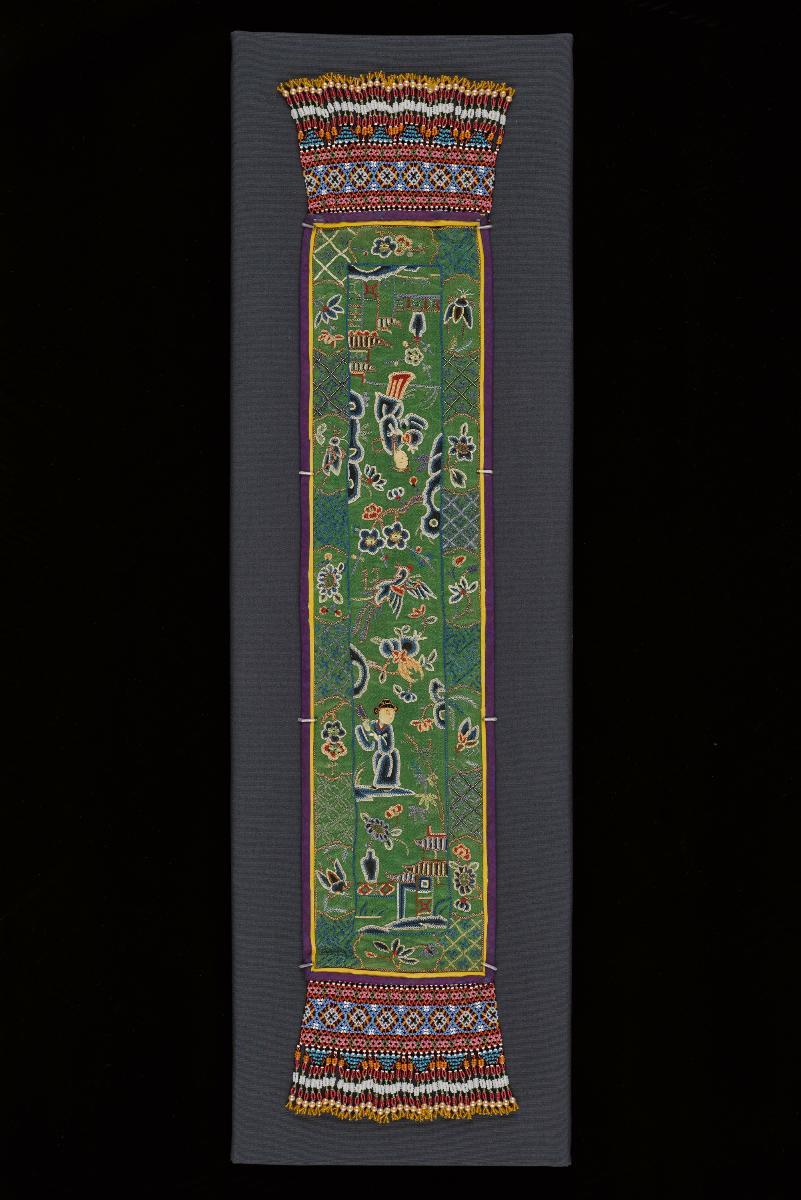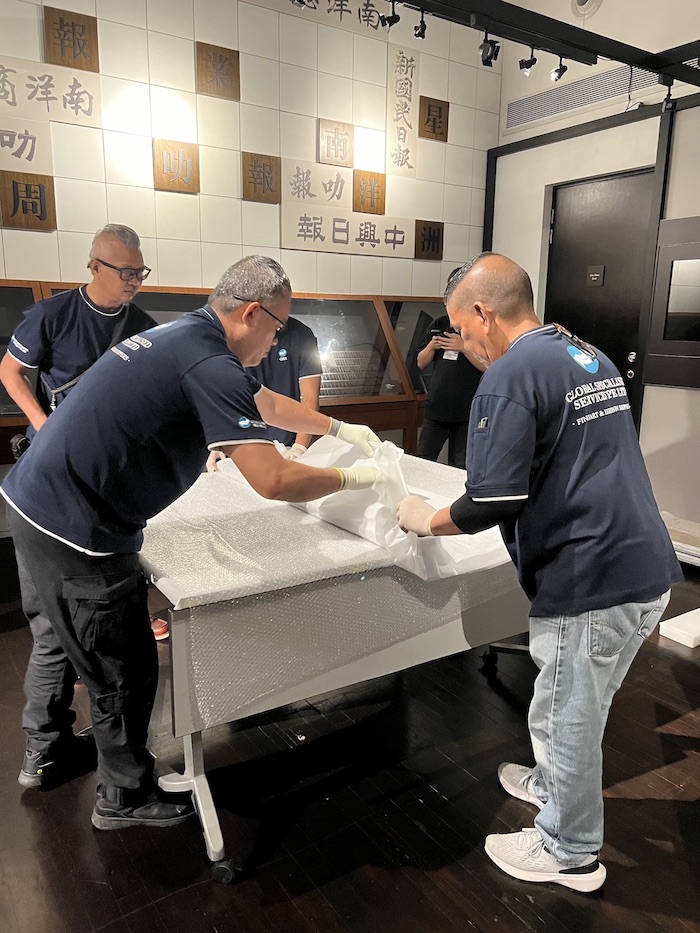This ‘selendang’ or shoulder cloth is a narrow piece of rectangular cloth worn over the shoulder. This shoulder cloth was dyed by ‘tritik’ (stitch-resist) and ‘pelangi’ (tie-dyeing), where sections of the cloth were sewn or tied respectively to resist the colour of the dye. These methods of tie-dye were inspired by Indian trade cloths, and are found throughout Southeast Asia. The zig-zags at the fringes were achieved by the pelangi method while the paisley-style designs were done by the tritik method. It is said that the paisley-style designs reflect Indian influence.




